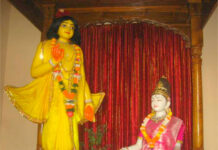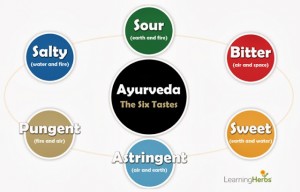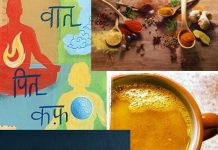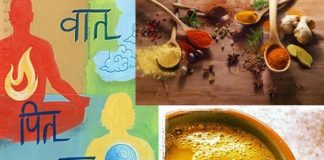Ayurveda classifies foods by their rasa or initial taste on the tongue. There are six tastes in Ayurveda, known as shad rasa. They are: sweet, sour, salty, bitter, pungent, and astringent. Salty taste is comprised of the water and fire elements. With regard to the doshas, the salty taste (lavana rasa) in Ayurveda decreases Vata dosha and increases Pitta and Kapha doshas. The energy or virya of salty is heating. The vipak or post digestive effect of the salty taste in Ayurveda is sweet. In terms of gunas or qualities, the salty taste is heavy, hot, and oily. Salt nullifies all other tastes.
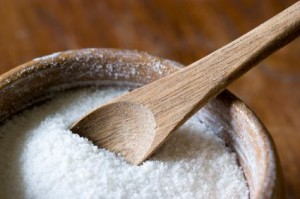
The salty taste in Ayurveda is found in various types of salts, kelp, and seaweed. Most watery vegetables, such as zucchini, cucumbers, and tomatoes, contain naturally high levels of saline.
There are multiple varieties of salt. Himalayan rock salt (saindhava lavana) contains chromium, iodine, iron, lithium, magnesium, manganese, phosphorus, potassium, and zinc. It is cooling rather than heating. Mineral salt includes calcium, chloride, iron, phosphate, potassium, and zinc. It is moderate in terms of its heating / cooling properties. Its aftertaste is pungent. Mineral salt decreases Vata and Kapha doshas and increases Pitta when used in excess. Black salt contains iron and is heating. It may increase Pitta dosha. It’s better to cook with sea salt. Sea salt comes from evaporated sea water. Use rock salt or mineral salt if you have high blood pressure. Table salt is made from sodium chloride. It comes from salt deposits that have been mined and then undergoes a process that removes most of the nutrients.
The salty taste in Ayurveda promotes salivation and digestion, increases thirst and appetite, is anti-flatulent, and works as a laxative. Salty foods soften the bodily tissues (dhatus) and aid in their growth. Salt maintains the water electrolyte balance in the body and provides energy. It relieves stiffness, spasms, and contractions. Salt baths remove toxins from the body.
Excessive use of salt leads to hypertension, kidney stones, and skin problems. When overused, the salty taste in Ayurveda causes stagnation of the blood, excessive thirst, hyperacidity, burning sensations, muscle wasting, wrinkles, and makes the hair turn gray or causes hair loss. Table salt can also cause the cells in the body to retain water and lead to high blood pressure, but rock salt doesn’t do this.
Each taste has an effect on both the body and the mind. The salty taste in Ayurveda promotes confidence and zest for life and it calms the nerves. Excess use of salty leads to greediness and makes a person overambitious.
Ayurveda states that we require all shad rasas in our diet, so be sure to balance your diet accordingly. A personalized Ayurvedic consultation can help you understand the types of food which are best to incorporate into your diet.
This article was first published on http://vedichealing.com/salty-taste-ayurveda/


